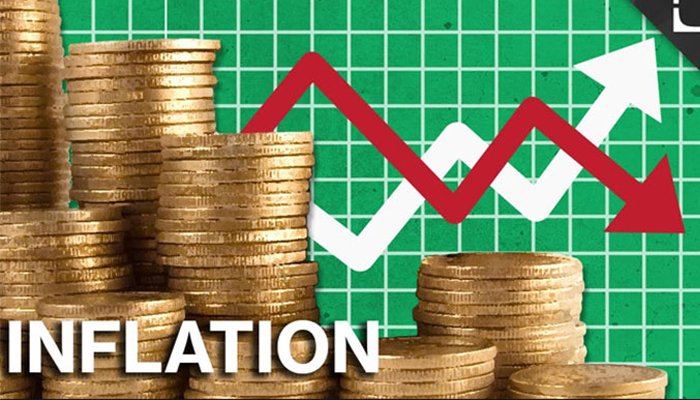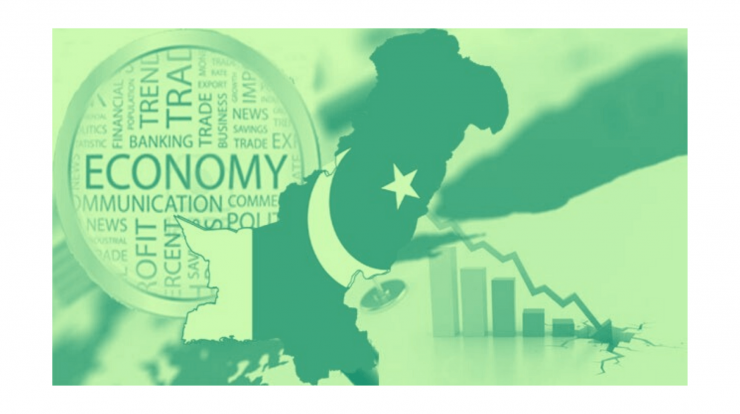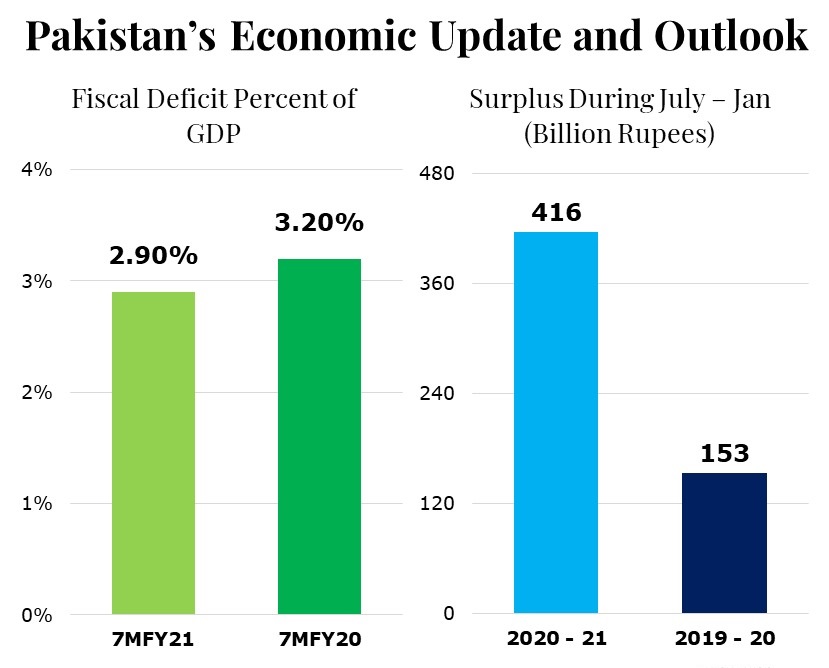ISLAMABAD: Pakistan’s fiscal deficit has reached 3.5 per cent of GDP (Rs1.603 trillion) in first eight months (July-February) of current fiscal year even though the government boasts of having created over Rs1.7tr worth of fresh tax demand.
The eight-month deficit is slightly lower than 3.7pc of GDP or Rs1.613tr of same period last year when the country finally posted 8.1pc of annual budget deficit — one of the highest.
In its April 2021 Monthly Economic Update and Outlook, the ministry of finance has raised concern on account of third wave of the Covid-19 pandemic threatening economic concerns and putting pressure on recovery, but said timely government decisions and small lockdown policy were helping the economy to keep its pace of recovery.
The ministry said the government was maintaining fiscal deficit despite higher mark-up payments and pandemic-related expenditures. “The fiscal deficit has been contained to 3.5pc of GDP during July-February FY2021 compared to 3.7pc of GDP last year”.

The first eight months witnessed an increase of 9.2pc in net federal revenue receipts to reach Rs2.188tr compared to Rs2.003tr of last year. Total expenditures grew by 1.3pc to Rs4.132tr during July-Feb FY2021 against Rs4.079tr of last year. On the other hand, the primary balance posted a surplus of Rs286 billion in first eight months of current year against Rs104bn of last year.
The ministry conceded that inflation was on the higher zone owing to a combination of government policy decisions and market conditions but hoped that the inflationary pressure would ease next year.
The Consumer Price Index (CPI) has increased by 9.1pc on year-on-year (YoY) basis in March 2021 as compared to 10.2pc of same month last year mainly due to an increase in prices of food items, clothing and footwear. On average inflation was recorded at 8.3pc in the first eight months of the current fiscal year as against 11.5pc during July-March FY2020.
“A few consumer items as well as energy prices slightly pushed up inflation in March 2021,” the ministry said but attributed it to market conditions saying “historically it has been observed that in Ramazan, due to market imperfection, the inflationary pressures are observed”.

At the same time, the ministry warned that recent increases in international and domestic energy prices were expected to have transitory effects on inflation. “The recent rising trends in international commodity prices and domestic energy prices may still exert temporary second-round effects on inflation in the short run”.
All in all, inflation is expected to remain between 8.0 and 9.5pc next month. However, from the beginning of the next fiscal year, assuming the absence of any new supply shocks, favourable base effects may start to drive YoY inflation to lower levels.
The ministry said the Federal Board of Revenue (FBR) had adopted smart taxation model under which it was pursuing revenue where it was latent. It thus continues focusing long-term objectives like economy and broadening of tax base, in search of substantive revenue numbers. It has shifted focus to identify about 3,500 big revenue yielding taxpayers, multinationals and big corporates, cluster them under a standardised, focused and professionally-oriented audit space, impose tax, get adjudicated, and then collect it.

The FBR has, therefore, engaged in targeted audit and enforcement and has moved 3,750 “large cases” from under the bird eye view – Regional Tax Offices (RTOs) – into the hawk eye view – Large Taxpayers’ Offices (LTO). As a result, “healthy tax demand of Rs1.7tr has been created” in first three quarters out of which 91pc of the tax has been imposed by the LTOs, and 4pc by Corporate Tax Offices (CTOs) – an evidence that tax imposed is healthy and recoverable once favorably adjudicated by the appellate forums.
Talking about the real sectors, the report said the Federal Committee on Agriculture in the second week of April had reported that except production of cotton (seven million bales), major Kharif crops surpassed the production targets of 2020-21 with rice and maize production at 8.4m tonnes each and sugarcane at 81m tonnes.
The committee has also reported that the downside risk of cotton production would be mitigated by better production of all other crops. Thus, agriculture sector is expected to perform well. For Rabi season 2020-21, wheat crop production is estimated at 26.04m tonnes, showing an increase of 3.1pc against last year’s 25.25m tonnes.

The large scale manufacturing (LSM) index is exposed to external conditions. In February this year, the LSM index has improved by nearly 4.9pc on a YoY basis. The ministry hoped for strong year-on-year LSM growth in coming months. In the same period last year, the international and domestic spread of the coronavirus had depressed industrial activity and LSM declined by 21pc in March 2020. “Although Pakistan currently experiences a third wave of virus infections, it may not depress industrial activity as much as it did during the same period last year,” the report said.










